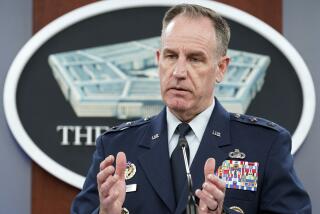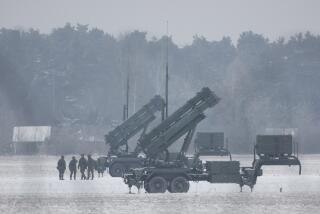Data on Iraqi forces are called unreliable
- Share via
WASHINGTON — The U.S. military does not have an accurate tally of the number of Iraqi security forces who have been trained or who are present for duty, according to an oversight agency’s analysis of Pentagon reports that was released Thursday.
The study says some Iraqi soldiers and police who were killed or wounded in action remain on the payroll so their families can receive financial compensation, skewing the statistics. The study was done by the Office of the Special Inspector General for Iraq Reconstruction.
Reinforcing earlier findings, Special Inspector General Stuart W. Bowen Jr. and other officials said the data being provided to the U.S. military were inaccurate.
“If you say you have 10 people ready to fight but three are injured or killed, you don’t have 10 people ready, you have seven,” said Kristine R. Belisle, a spokeswoman for the inspector general. “So it is a very misguided and misleading number.”
The study, which reviews Pentagon progress reports on Iraq, also notes that there is no way of knowing how many of the men who were trained remain in the force. As a result, the U.S. military lacks an assessment of training rates.
The readiness of the Iraqi army and police is a crucial issue for the U.S. military. Congress has spent $20.4 billion building up the Iraqi forces since 2004. Strategy calls for American troops to gradually step back into “overwatch” roles as the Iraqis take more responsibility. Until the Iraqis are more capable, military officials have said, significant cuts in U.S. troops will be risky.
The Pentagon often has noted problems with the Iraqi forces. The military’s quarterly progress reports have highlighted deficiencies in assessing their size and readiness.
Like previous Defense Department reports, the special inspector general’s study found a shortage of Iraqi officers. The police are short 16,377 officers and the army needs 3,900. The department said it would “take years to fully address the officer shortfall,” the study says.
The goal of creating an Iraqi force of up to 646,000 by 2010 may be inadequate, it concludes.
“The current force structure has been directed toward internal security challenges,” Bowen said. “Insuring the ISF can defend itself from external threats is a next-stage enterprise.”
The report can be found at https://www.sigir.mil/reports/ pdf/audits/08-015.pdf.
--
More to Read
Sign up for Essential California
The most important California stories and recommendations in your inbox every morning.
You may occasionally receive promotional content from the Los Angeles Times.













